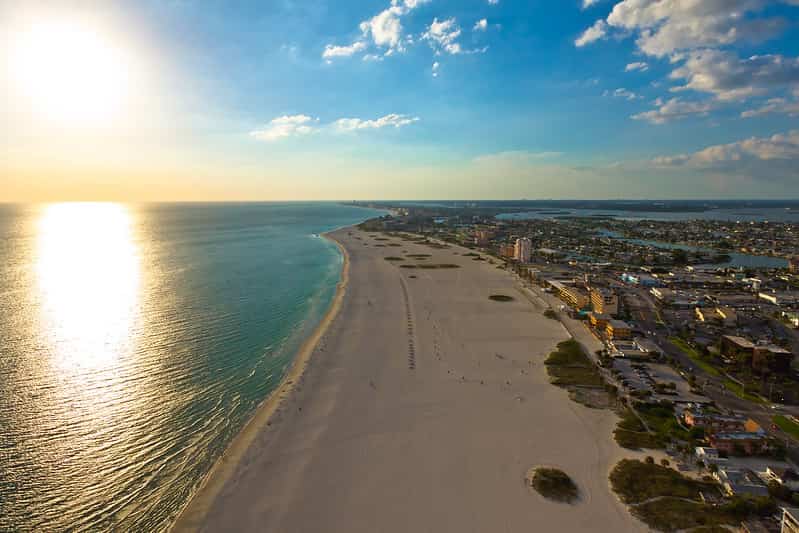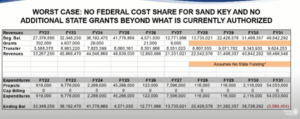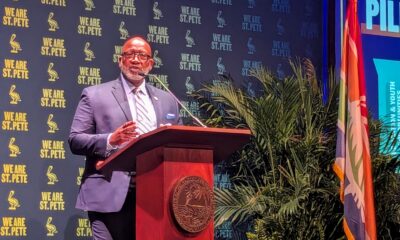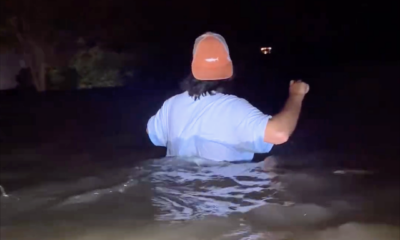Pinellas faces issues in funding beach nourishment projects

Pinellas County is strategically looking at different scenarios that could help it secure much-needed funding for its beach renourishment projects.
Kelli Levy, Pinellas County Public Works Director, provided different financial pictures to the Pinellas County Tourist Development Council Tuesday, showing how there are currently three federal renourishment projects that are authorized – Sand Key, Treasure Island and Long Key.
In the past few years, the county has been working with the Army Corps of Engineers on the reauthorization of funding renourishment cycles for Treasure Island and Long Key, which were combined together into one project. However, Sand Key has been problematic as the ACOE requires 100% of all the easements for the next renourishment cycle. The county is well below 50% of the 461 number of easements it needs.
“Right now, we are at a standstill. The next cycle was scheduled for 2024, but even if we received positive news at this point in time, it’s very unlikely we will move forward in 2024 given the time crunch,” Levy said.
Typically, funding the nourishments for Sand Key is split with 60% of it being federally funded and the remaining 40% getting covered by the county.
Additionally, the Long Key/Treasure Island new reauthorization would be split evenly between federal and county dollars.

A map showing the areas for beach renourishment and the funding. Image: Pinellas County records
“We will be paying a little bit more [for Treasure Island/Long Key] and we will apply for state funding for that stretch,” Levy said. “We wanted to take a look at how stable the fund is given some of the challenges we are given with Sand Key, and if we had to fund that project without federal support.”
Without the federal support, the county would be in the hole by millions of dollars.
She laid out three different scenario overviews:
Scenario 1: There wouldn’t be any federal funds for Sand Key, but funding is intact for Treasure Island/Long Key. There would be no state grants beyond what is currently authorized. Out to the fiscal year 2031, the county would be in a deficit of over $3.5 million. Levy said this scenario is unlikely given how the county has been successful in competing for state grants.

Scenario 1 shows the worst-case scenario in the lack of funding sources.
Scenario 2: This scenario assumes federal cost share for Treasure Island/Long Key as well as state grants. Levy said this scenario is more likely to occur.
Scenario 3: This is the best-case scenario, which assumed the county worked with the ACOE, has the easements in place and receives state grants for all the projects.
“One of the things that helps the most is the incredible tourism we’ve had…robust revenue from tourist development taxes has definitely helped, but going forward, what happens with federal participation and depending on what happens with state grants, really drives the picture for the fund,” she said.
In 2022, the county was able to tap into roughly $5.6 million for beach nourishments.
Although, the funding for the beach nourishment doesn’t include other factors such as storms causing damage to beaches and erosion. The damage has to meet a certain threshold for a county to receive funding.
For example, when Hurricanes Irma and Ida hit the area, and the county suffered significant erosion as a result, it did not meet that threshold so the county did not receive any funding.
She said another concern is the state of the Sunshine Beach and Sunset Beach on Treasure Island, which are critically eroded beaches that have been on a four-year beach renourishment cycle; however, the new authorization pushes that cycle to six years.
Levy said many political leaders are backing Pinellas County’s request and support for funding the beach renourishments and hopes to have an answer soon.
Dunedin Mayor Julie Ward Bujalski, who sits on the TDC board, said the beach on Causeway Boulevard should be considered a beach and receive funding for nourishment as it sees even more activity than Honeymoon Island, which is also not a federally-authorized nourishment project.







